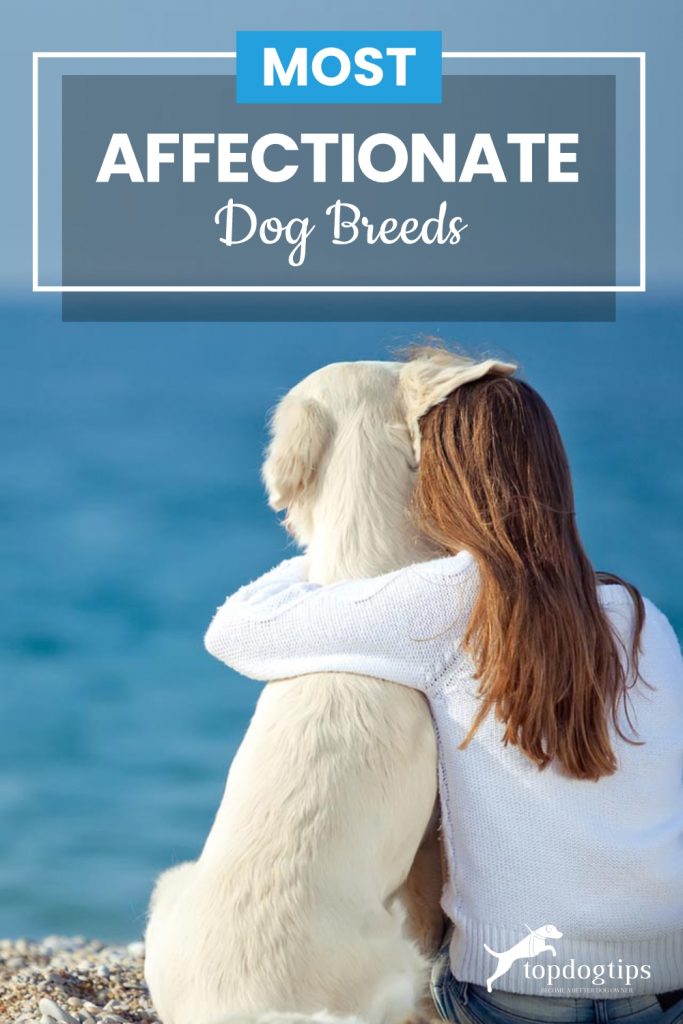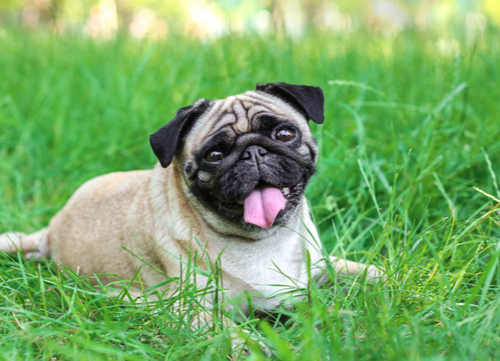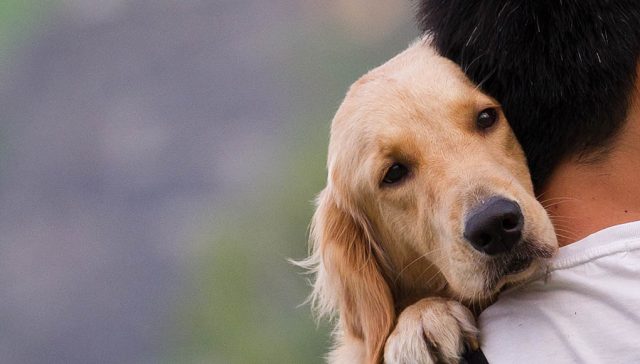
Table of Contents
When looking to find your new best friend, it may be important to consider the level of affection you want from your dog.
Some breeds work well as working dogs, guard dogs, or show dogs. Then, there are breeds that prefer human companions' comfort and affection.
If you’re looking for a new best friend who enjoys snuggling up and spending time with you and is incredibly affectionate, here you will learn about the most affectionate dog breeds and their characteristics.
In addition, we share several things to always consider when picking a new best friend.
4 Dogs Who Are Most Likely to Cuddle with You
1. The Pug
Known as the Velcro dog, this breed is perfect for owners wanting a smaller companion with a giant personality.
This most affectionate dog breed has a great personality and is typically looking to make their owners laugh and play.
The Pug enjoys acting a bit aloof and comical while clowning around is at the core of this breed.
If you’re looking for a dog that loves to show off and engage, the Pug is the perfect pup.
Pugs are highly sensitive and thrive on human companionship. They love spending time with their family and will happily sit with you, nestled among blankets on a lazy Sunday afternoon.
They typically prefer company, which can cause a few issues when left alone for extended periods of time.
In fact, the center of their personality involves engagement and interaction with their humans.
These playful dogs enjoy games and interaction, although they occasionally struggle with house training.
The pug is one of the most affectionate dog breeds due to its loyalty and love for its family.
They like to be close to their owner, often following them around the house, whether it’s to the kitchen for a snack or taking a quick trip to the bathroom.
They will often curl up in your lap, wanting to snuggle and rest against their human.
Characteristics of Pugs
Known for its short stature and box-like shape, the Pug is a small dog that weighs under 20 pounds.
Deep wrinkles sit across their face, with large, round eyes. This breed is known for having an “underbite,” which has the lower teeth extending beyond the upper teeth.
The downside to this characteristic is the known snoring and snuffling common to pugs.
This facial characteristic also makes extreme heat or cold difficult on Pugs.
As such, the Pug must be kept indoors and should not remain outside for extended periods.
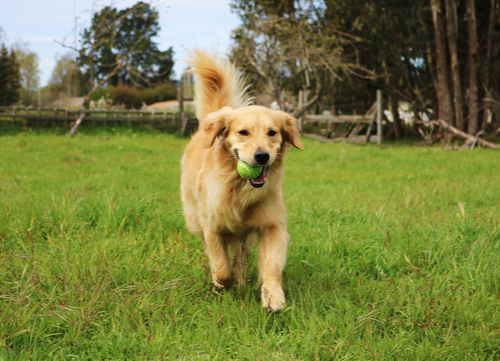
2. The Golden Retriever
A breed of loyalty, love, and intelligence, the golden retriever is a wonderful dog for those wanting the most affectionate dog breed.
The golden retriever is often used as a working dog, whether it’s helping law enforcement, participating in hunting or tracking, or acting as a service and therapy dog.
Thanks to their intelligence, these dogs are fairly easy to train, making them perfect for nearly all homes (with or without children).
The Golden Retriever is infamous for its playful personality. They are typically slow to mature, meaning they’ll keep that “puppy-like” personality for many, many years.
Some Goldens keep their puppy traits until old age, making them a lively breed for any family. Walks, playing fetch, or other physical stimulation is needed daily to keep your pup from getting bored.
The Golden Retriever loves to be with their family, thriving with attention from “pack members.”
They don’t do well when left for long periods, preferring the company of their owner continuously.
His eager-to-please personality makes this dog perfect for someone wanting the most affectionate dog breed.
Although this breed is not small, they love snuggling, cuddles, pets, and head scratches. They tend to shadow their owners, staying close whenever possible and often getting underfoot.
Characteristics of the Golden Retriever
Sitting between 55 and 75 pounds, the golden retriever is a large breed that doesn’t understand its size.
They are cuddly and affectionate, often living with a “small dog” mentality.
Don’t be surprised if your Golden decides to join your lap for a cuddle if the opportunity is there.
Their dense coat has two layers. There is a water-repellent outer coat and a thick undercoat.
This breed does shed quite a lot compared to other breeds, requiring daily brushing, especially in the spring and fall.
It’s important to get your Golden Retriever used to grooming by using common tools early on.
The more frequently the pup sees nail clippers, combs, brushes, and clippers, the less likely they will react to them.
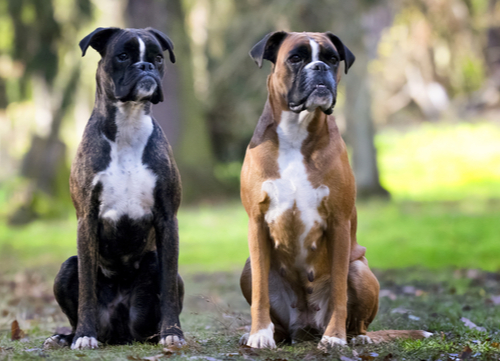
3. The Boxer
Although originally bred as a guard dog, the Boxer prefers a family companion’s lifestyle more than protection.
With a sweet and affectionate personality, a fantastic sense of humor, and high energy levels, this breed will keep you on your toes.
This breed falls in love quickly with their family, becoming loyal and affectionate companions.
The Boxer is known for their mischievous and playful nature, bringing a ball of energy and fun everywhere they go. They are later to mature than other breeds, keeping many of their puppyhood traits beyond three years old.
Boxers are often considered cat-like, using their paws to swat toys, bowls, or even their humans occasionally.
Their love of play and high energy levels require daily physical and mental stimulation, especially with younger Boxers.
This breed is known for its intelligence and fearless nature, making them relatively easy to train—although they can become quite headstrong when they don’t want to do something.
They are patient and playful with children, enjoying the company and attention.
Due to their rambunctious nature, the Boxer may not be the best breed for toddlers or small children.
This breed can be wary of strangers but will typically not act aggressively unless defending their family or home. Proper training and socialization can help encourage positive behaviors as adults.
The Boxer breed is known for their “wiggly kidney bean butt,” often wagging their tails so hard their body dances into a kidney bean shape over and over.
They also tend to prance or turn in circles when happy and will vocalize their excitement with low-pitched “woo” sounds.
These vocalizations are different from barking, as they typically occur when the dog wants attention or when excited.
These goofy characteristics are common with the Boxer breed, bringing joy and humor to their families and owners daily.
They love showing their loyalty and love to their family, bringing affection and smiles wherever they go.
Characteristics of the Boxer
The Boxer is a large breed dog, weighing in at 60-70 pounds as an adult. They have short coats that often make them more susceptible to the elements than most dogs. As such, the Boxer is not suited for extreme heat or cold, especially as an outdoor dog. They require minimal grooming, although they can shed quite a bit.
Traditionally, the Boxer was known for clipped ears and docked tails, although many owners opt to leave both intact now.
The Boxer’s tail is naturally long and narrow, making it susceptible to a medical condition called “happy tail.”
This condition is caused by repeated injuries to the tail when hitting walls, furniture, or crates.
Their exuberant temperament and excessive tail wagging can become problematic for Boxers, especially when the tail has not been docked.
If you choose to keep your pup’s tail whole, ensure close monitoring and examine his tail frequently for signs of injury.
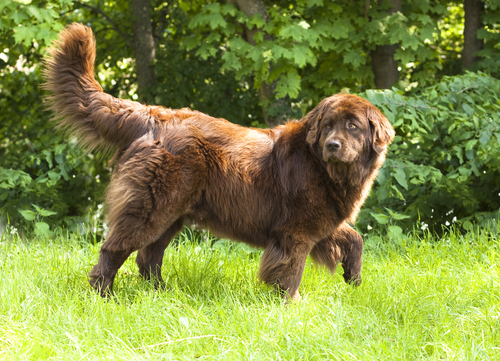
4. The Newfoundland
Don’t let this breed’s size intimidate you; the Newfoundland is a gentle giant originating from Newfoundland.
This breed is known for being exceptionally gentle and friendly, loving children and their families.
Their strong desire to please, high intelligence and friendliness make them the perfect addition to any family wanting an affectionate pup.
Their massive size can make the Newfoundland a magnet to children but can appear intimidating if they’re unfamiliar with the pup.
It’s important to remember that due to Newfoundland’s massive size, small children and toddlers may accidentally fall or become injured.
As such, it’s important to supervise all contact between children and the dog, despite his incredible personality and love of children.
Training and housebreaking your dog should always remain an important part of bringing home your Newfoundland, purely based on the pup’s extreme size.
Leash training is critical, particularly because the dog will be over 100 pounds as an adult. Likewise, it’s important to deter any jumping up or rough play.
With a sweet and gentle disposition, the Newfoundland breed is a living teddy bear that loves to snuggle.
Newfoundland dogs thrive when staying close and spending time with their family with a strong attachment to their families. While they don’t need long, strenuous bouts of physical activity, they will need regular physical and mental stimulation.
These dogs love the water and are fabulous swimmers. Their thick, heavy coats make the breed well-suited for cooler climates, although they can adapt to warmer environments.
Characteristics of the Newfoundland
As the giant breed on our list of most affectionate dog breeds, the Newfoundland weighs between 100-150 pounds. Don’t let the massive size scare you off.
These dogs are gentle giants, thriving on human interaction and love. The Newfoundland has a long, flat, water-resistant double coat.
The undercoat is a dense, soft layer that requires grooming two to three times a week. Although shedding is not excessive, there is an increase in the hair during the spring and fall months.
It’s important to remember that it’s not the dog’s size that determines whether they’ll be affectionate, but the personality attached.
Whether you’re looking for a small dog under 20 pounds or a gentle giant sitting above 150 pounds, there’s nothing better than finding a dog that’s sweet, loyal, and loving.
To help you choose a dog that’s best suited for your family, here are a few tips to remember:
What to Remember When Choosing Any Dog Breed
Always choose a breed for the space you have available. While many small breed dogs may have adapted well to apartment living, some dogs require a bit more space to roam.
If you choose a high-energy dog, they must have plenty of opportunities to run and play.
Many giant breeds are low energy and require minimal physical activity throughout the day but may take up a lot of space.
Never leave children unattended around a dog of any breed. Simply put, even the best-mannered dog has limits with children.
Many children handle dogs beautifully; however, the fact remains that even the best-intentioned child can accidentally cause the dog stress or pain.
Always teach children how to approach an animal properly.
Make sure to create a safe space for your dog that children cannot enter (like a crate) that can offer refuge if the pup gets overwhelmed with attention.
Likewise, always teach children that pulling on any part of the dog, whether tail, ears, or collar, is not appropriate.
Ask breeders about the dog's parents' personalities or the shelter about the dog's current behavior.
Although there are no guarantees in life, looking at parent behaviors or personalities is a solid indicator of your dog’s future potential.
Always ask the breeder to see both parents. If you find both parents are wary around people, tend to be reclusive or shy, avoid physical contact, or seem antisocial, there’s an increased chance of your pup acting the same way.
If you’re looking to rescue a dog from the shelter, talk to the staff about any reactionary behavior and interactions with other animals.
The shelter is a stressful environment for any dog, which may cause uncharacteristic behavior.
Start training your dog as soon as possible.
Puppies, adults, and senior dogs can all benefit from basic obedience training.
Training not only encourages ideal behavior from your pup, but it also brings the added benefit of bonding with your new family member.
Consider enrolling in agility, sport, or trick training; it offers physical and mental stimulation for your dog.
In Conclusion
Remember, every dog is unique.
Despite listing the most affectionate dog breeds here, it’s important to remember that every dog is an individual.
Some pups are more affectionate than others. Some bring big personalities and funny quirks, and others offer endearing companionship.
Our list of each of these breeds is a general guideline and not a hard and fast rule.
The best way to have an affectionate dog is to reinforce the behaviors you want.
READ NEXT: 30 Best Lap Dogs for Cuddly Pet Owners
